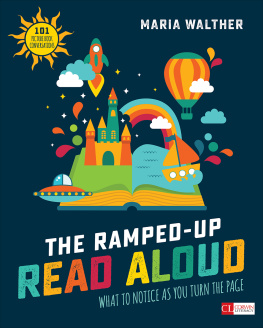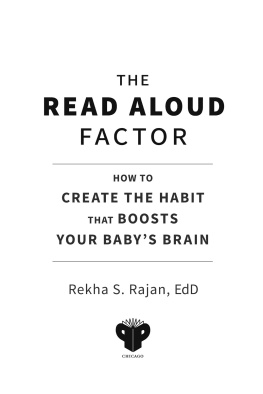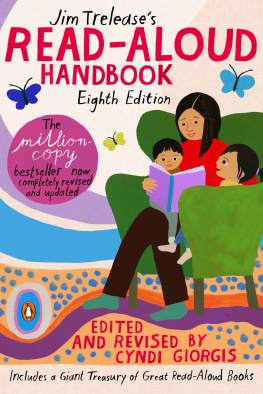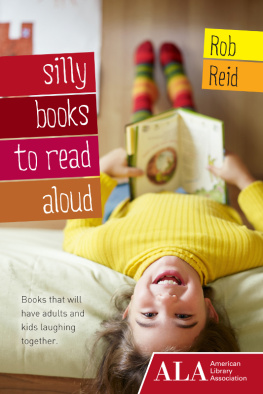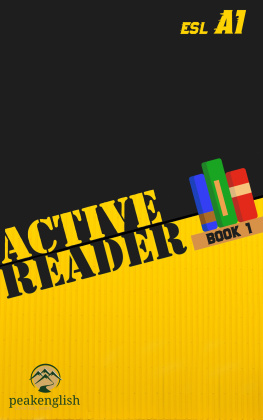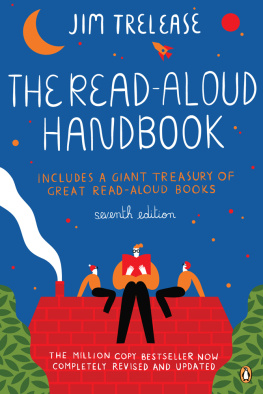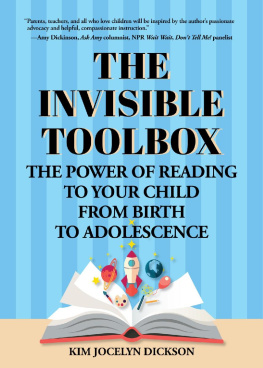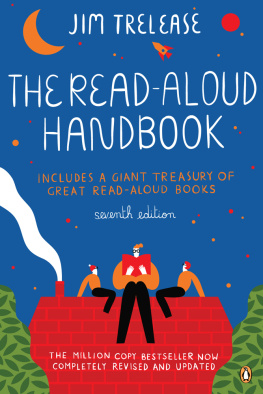Samantha Cleaver grew up in Chicago, Illinois. She taught special education and worked as an instructional coach before moving to Charlotte, North Carolina, where she helped lead the initial design and startup of Active Reading work for Read Charlotte, a community-wide initiative to double the number of students reading on grade level by third grade in Mecklenburg County. She earned a doctorate in special education with a focus on literacy interventions from the University of North Carolina at Charlotte. Currently, she works at a local middle school teaching English language arts and math. She has three young children who are growing into Active Readers. Her favorite books to read with her children are Where the Wild Things Are by Maurice Sendak, Strictly No Elephants by Lisa Mantchev, and the Finn Family Moomintroll books by Tove Jansson.
As a parent, Ive watched my daughter grow from an infant, listening to me reading board books while she sat on my lap, to a reader in her own right, reading books like Amelia Bedelia by Peggy Parish and Frog and Toad by Arnold Lobel on her own. This transformation has taken five years, but it seems like it happened in moments. There was the first time she chose her own book for me to read. The first time she read a picture book on her own by reciting her own version of what was happening on the pages. The first time I read her a chapter book. The first time she read a book to me.
Thinking about your own child:
- What milestones have they achieved as a reader?
- What memories have you already created around reading?
- What do you think your child will remember about reading during their childhood?
- What favorite books have you shared?
- What books have you read so many times you can recite them by memory?
- What next reading milestone is your child on the cusp of?
I magine a kindergartener poring over a new book, running their finger under each word they sound out. Unable to read in their head, they say each word as it comes to them. The. Cat. Sat. On. The. Mat. Sometimes they laugh out loud. Sometimes they are silent for minutes at a time, studying the pictures. After they finish the story, they eagerly tell you about everything theyve read.
As children move from preschool to kindergarten and into elementary school, Active Reading moves with them. When children are in their pre-school years, Active Reading looks loud and excited with children pointing to the pages of a picture book, completing familiar refrains in the story, and talking about the words they come across. With a first or second grader, it may be more subduedreading a picture book with longer stretches of text and asking questions every page or so. And with a third or fourth grader, it may involve reading chapters of a novel, stopping after important or surprising scenes to talk about your reactions. How Active Reading looks will change with your child. As they move into reading on their own, Active Reading continues to be an important way for children to engage with picture books, chapter books that youll read together, and eventually the books they read on their own.
Reading with your children may be an established part of your day, or something new. However reading aloud fits into your daily schedule, it is never too early or too late to start Active Reading with your childboth to share the experience and to improve their reading skills. Even if your child is able to read on their own, Active Reading can play an important role in fostering a love of reading simply by making reading a fun time for you to spend together.
This chapter provides an overview of what Active Reading is and is not in the elementary years. This includes an overview of the research that supports Active Reading (also called shared reading or interactive reading) with children who are in grades K3. It provides a summary of the ABCs of Active Reading: Ask questions, Build vocabulary, make Connections. Finally, this chapter includes a discussion about the importance of continuing to read with children even after they can read on their own.
ACTIVE READING IN THE EARLY ELEMENTARY YEARS
In Erin Pavons house, either Pavon or her husband reads to their three boys (twins age six and their five-year-old brother). Each boy choses a book for their parents to read. The boys interrupt with a stream of questions about the story and new words they hear in each book. Pavon enjoys the time because she knows that someday her boys wont want to be read to anymore. For now, she says, they love it and theyre interested.
In the long run, Pavon hopes all their reading together fosters a love of books and stories in her boys. I really dont think there is anything more important than loving to read because it opens them up to so many new ideas, she says. Pavon is onto something. The research about how our kids brains engage with books is clear: kids learn a lot from books, starting with picture books.
Elementary SchoolAged Children Learn (a Lot) from Picture Books
We know that reading picture books to young children (preschoolers, age two to five) has a profound effect on their brains. A recent study examined how childrens brains were activated when they listened to a story three different ways. When the children listened only (like an audiobook), the children did not get enough information for their brains to understand and they didnt make connections across different areas in their brains. When the children watched an animated version of the story (like a video), there was a lot of activity in both the listening and seeing networks in the brain, but not a lot of connection between the parts of their brains. This way of watching a story seemed to be too overwhelming and produced the lowest rate of understanding. But when the children were read a story and could see illustrations (like being read a picture book), they understood the story the best and the various networks in their brains connected with each other. Thats the work that your childs brain is doing when you read to them, connecting different parts of the brain as they listen and look at the same time.
As children get older, and their brains and language matures, it can be difficult to see the benefit of maintaining a read-aloud routine. Arent picture books too babyish? Shouldnt kids be reading to themselves? (And, as a parent, isnt it nice to be out of the phase where kids need constant attention?)
Children in grades kindergarten through third still benefit from reading picture books, and the picture books that are just right for them are a step more advanced than what you may have read when they were in preschool. For example, Last Stop on Market Street by Matt de la Pea is the story of a little boy who takes a bus trip with his grandmother to visit a soup kitchen. In this book, children can follow along with CJs experiences and relate to the experience of going on an errand that they arent particularly invested in, as well as the experience of giving back through the soup kitchen. Older children are also better able to understand and talk about the topics of difference and fairness in the book in a way that younger children arent ready for. Finally, older children can connect with the language used in the bookmetaphors that describe rain and the feeling of listening to music are all too complex for preschoolers, but add to the reading experience for older children. Reading Last Stop on Market Street with preschoolers, you may talk about what CJ and his grandma did, but with elementary schoolers, you can talk about what happened, CJs feelings and reactions, and what our obligation is to make the world a better place.


